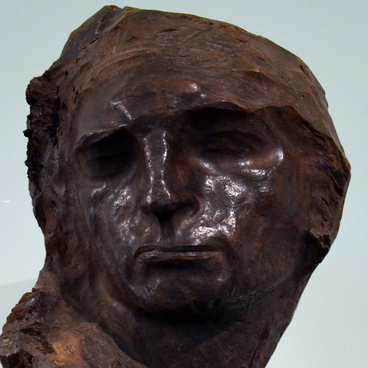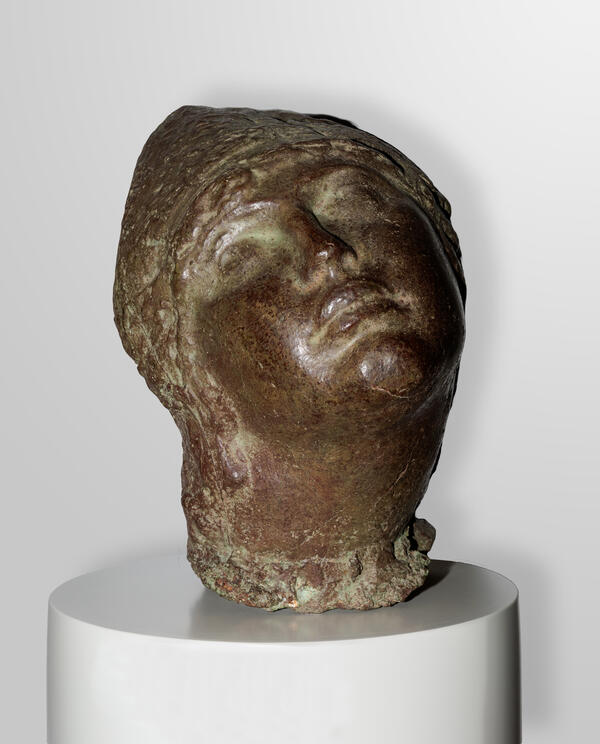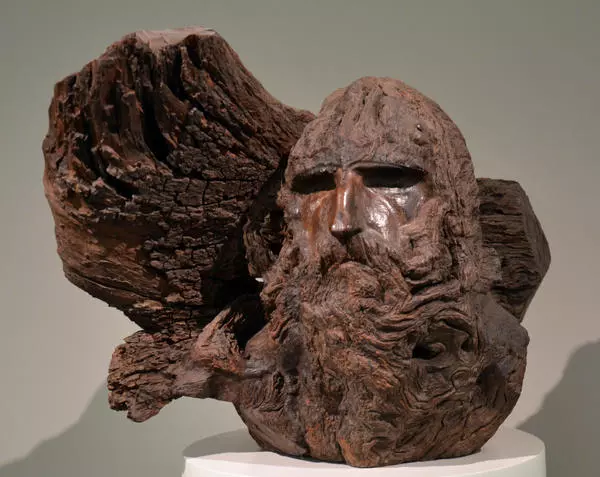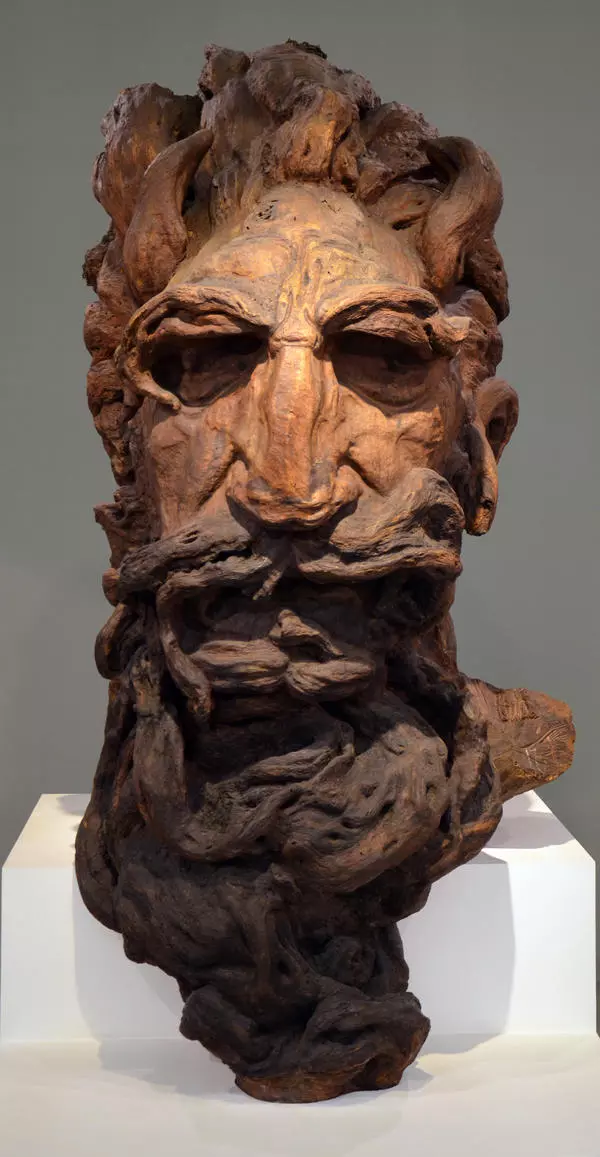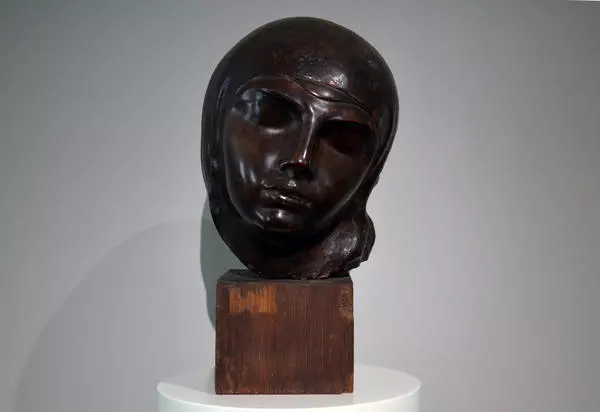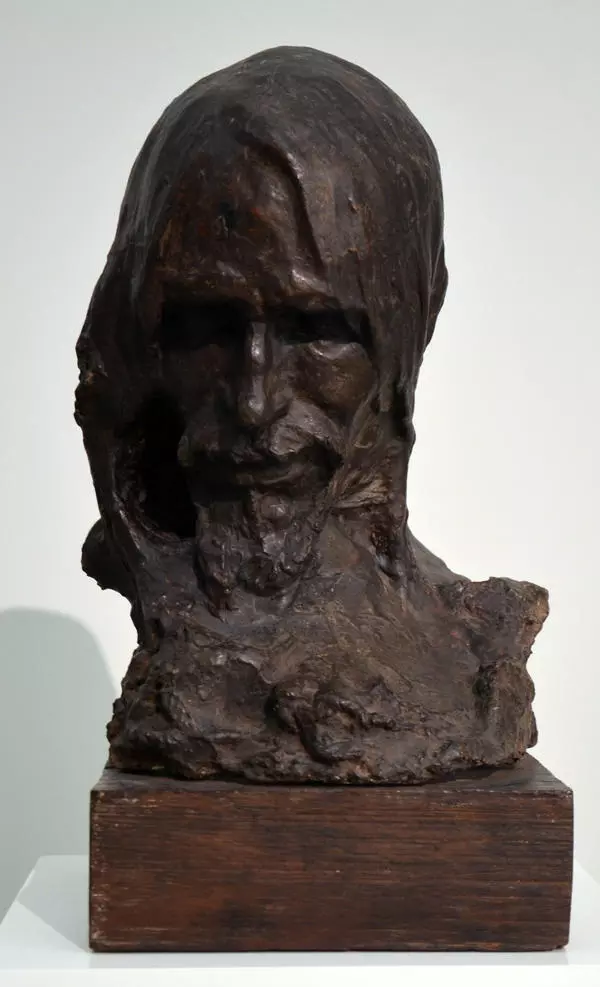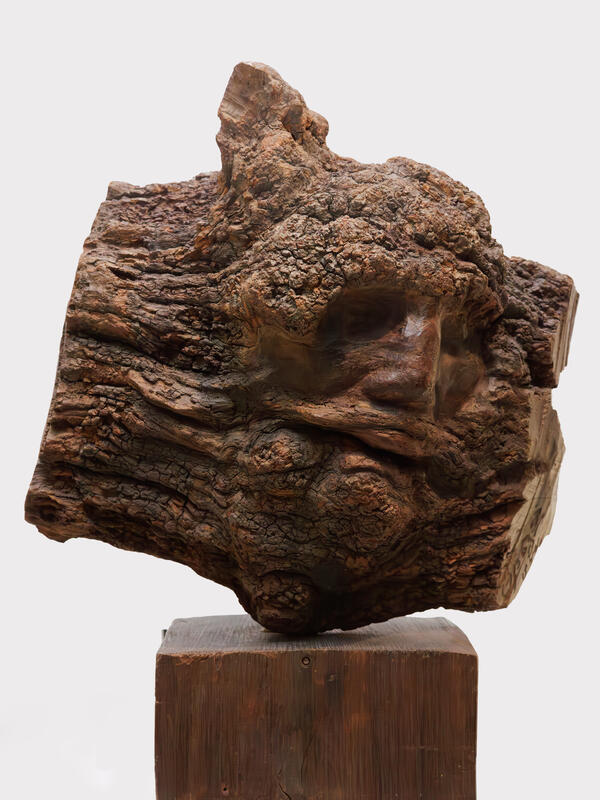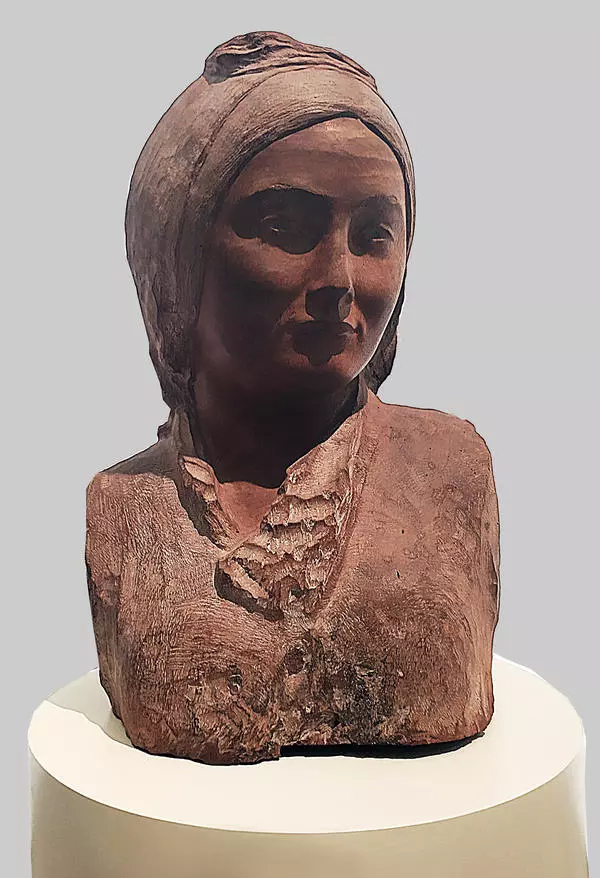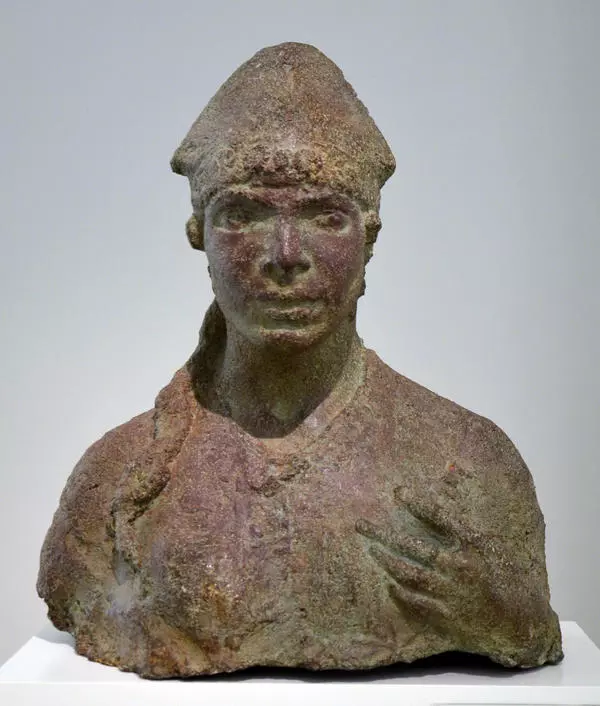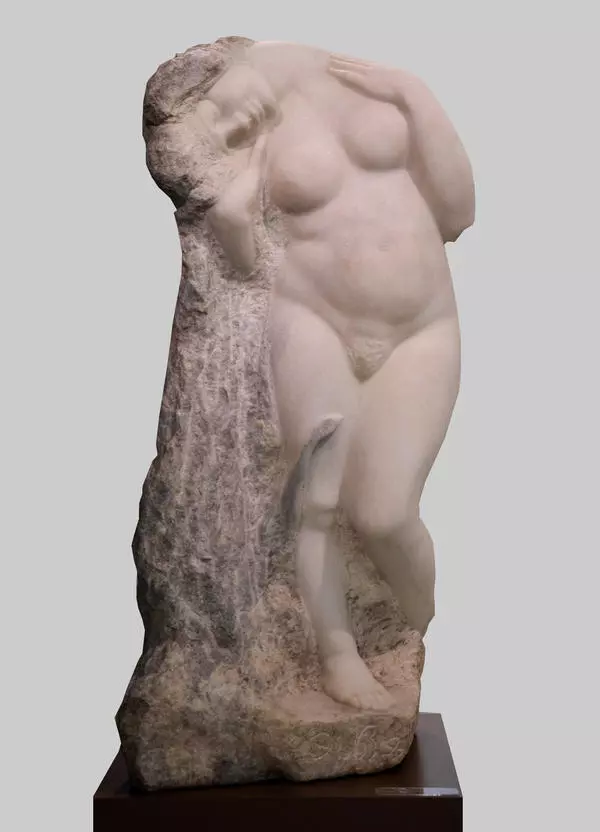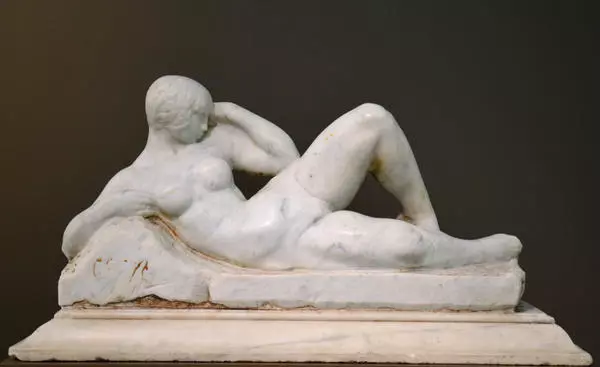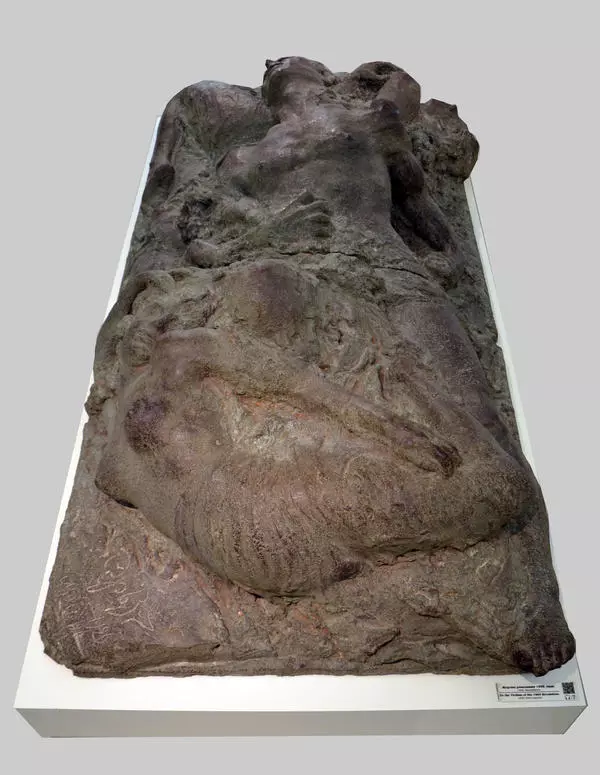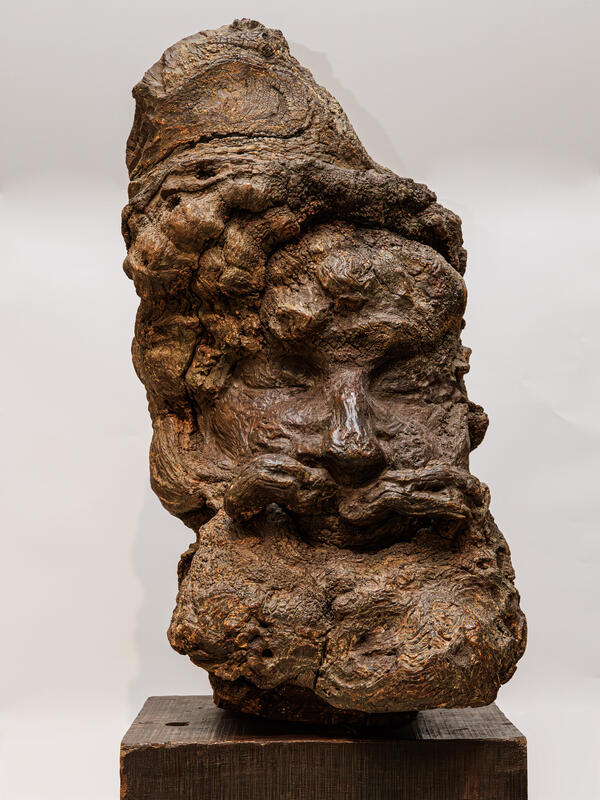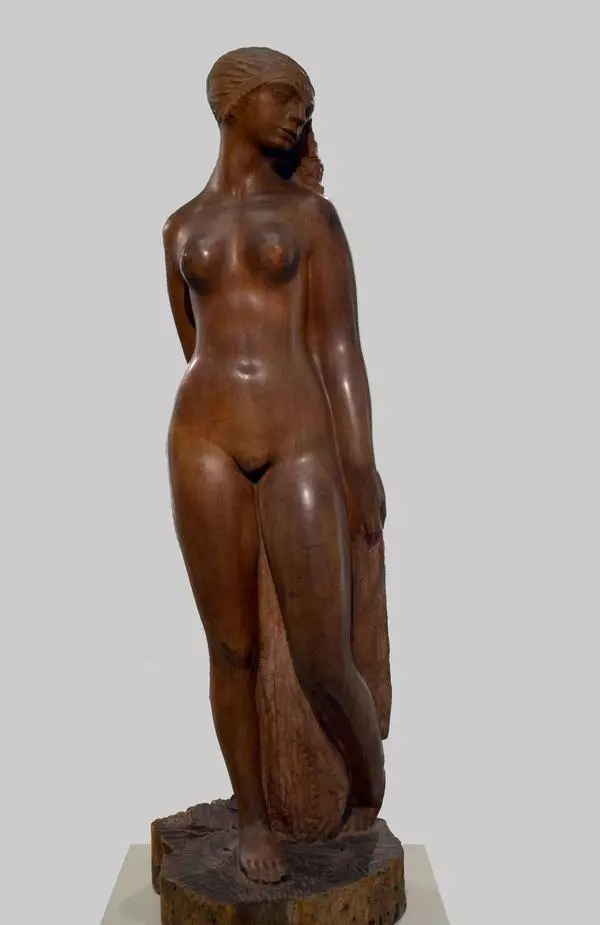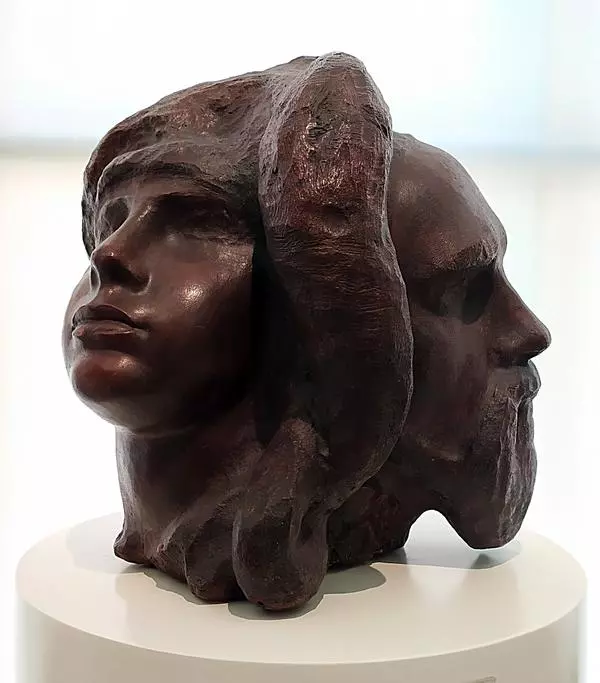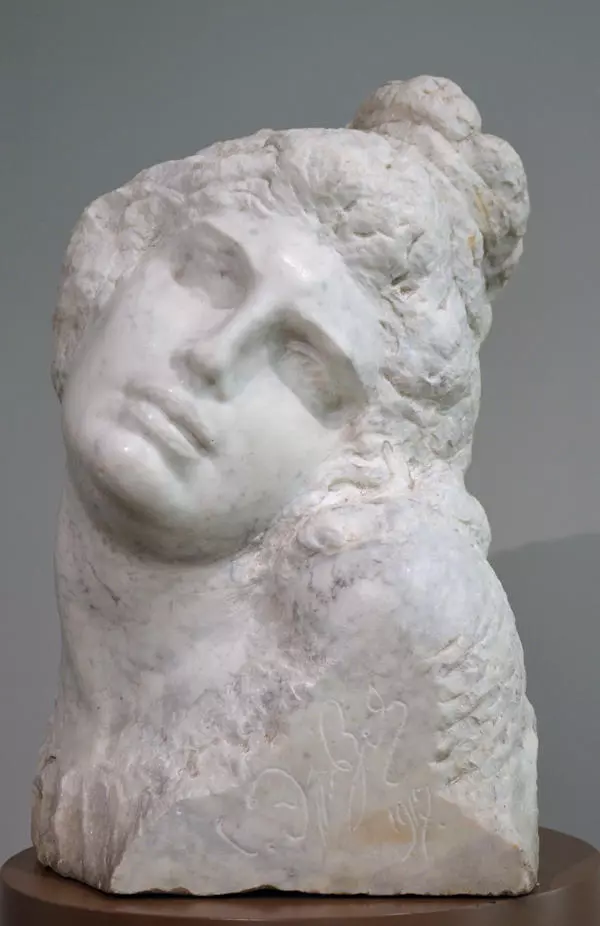Sculptor Stepan Erzia was creating the portrait of his mother — Maria Nefedova for several years. At that time the artist had long lived in Argentina, away from home and from his relatives.
While creating an artistic image of his mother, Stepan Dmitrievich was recalling events of past years that had left a deep trace in his soul. Once in spring, the quiet river Bezdna, on the bank of which stood the village of Bayevo, where the Nefedovs lived, overflowed its banks. A flooding began. The disaster deprived people of shelter, stores of food, put them on the verge of ruin and death. But Maria Ivanovna did not allow herself to get despaired. Brave, daring and resilient she had remained in her son’s memory during the flood and that was how he depicted her many years later.
The composition solution chosen by the artist for the portrait of his mother is unusually expressive. The material of the sculpture — quebracho — that was Stepan Erzia’s choice for many years of his life in South America, suits well for the creation of dynamic forms. The knotted roots of the wood, unexpected interweaving of its fibers, game of color render the depicted subject artistically expressive. Stepan Erze managed to master the art of processing the tough quebracho and to capture the image of his mother in a double time perspective: to reflect her difficult life experience and at the same time — the character’s optimistic attitude to the future.
When Stepan Erzia took the cutter, he did not have a pre-invented image to be embodied. It was created naturally, like the flight of a bird, like a folk song — without unnecessary effort, right from the heart of the master. Stepan Erzia possessed such a rich arsenal of artistic techniques and skills that the composition of the sculpture, the harmony of its silhouette are perceived as initially laid in the material, from which the master only removed everything unnecessary.
The mother’s sculpture is sizable and monumental. Although the history of the work is connected with a specific event of the past, the sculpture is more symbolic rather than realistic. This is a portrait of Maria Nefedova and at the same time the embodiment of the image of the Motherland — so far from South America, where the sculptor lived, and unreachable, as it seemed to him at that time.
Stepan Erzia was addressing the topic of motherhood throughout his life. All the works dedicated to it are distinguished by the minor mood. Their tonality, mixed with light sadness, reflects the state of mind of the master himself, who lived in a foreign land for almost all of his life alone, largely misunderstood and underestimated by contemporaries.
While creating an artistic image of his mother, Stepan Dmitrievich was recalling events of past years that had left a deep trace in his soul. Once in spring, the quiet river Bezdna, on the bank of which stood the village of Bayevo, where the Nefedovs lived, overflowed its banks. A flooding began. The disaster deprived people of shelter, stores of food, put them on the verge of ruin and death. But Maria Ivanovna did not allow herself to get despaired. Brave, daring and resilient she had remained in her son’s memory during the flood and that was how he depicted her many years later.
The composition solution chosen by the artist for the portrait of his mother is unusually expressive. The material of the sculpture — quebracho — that was Stepan Erzia’s choice for many years of his life in South America, suits well for the creation of dynamic forms. The knotted roots of the wood, unexpected interweaving of its fibers, game of color render the depicted subject artistically expressive. Stepan Erze managed to master the art of processing the tough quebracho and to capture the image of his mother in a double time perspective: to reflect her difficult life experience and at the same time — the character’s optimistic attitude to the future.
When Stepan Erzia took the cutter, he did not have a pre-invented image to be embodied. It was created naturally, like the flight of a bird, like a folk song — without unnecessary effort, right from the heart of the master. Stepan Erzia possessed such a rich arsenal of artistic techniques and skills that the composition of the sculpture, the harmony of its silhouette are perceived as initially laid in the material, from which the master only removed everything unnecessary.
The mother’s sculpture is sizable and monumental. Although the history of the work is connected with a specific event of the past, the sculpture is more symbolic rather than realistic. This is a portrait of Maria Nefedova and at the same time the embodiment of the image of the Motherland — so far from South America, where the sculptor lived, and unreachable, as it seemed to him at that time.
Stepan Erzia was addressing the topic of motherhood throughout his life. All the works dedicated to it are distinguished by the minor mood. Their tonality, mixed with light sadness, reflects the state of mind of the master himself, who lived in a foreign land for almost all of his life alone, largely misunderstood and underestimated by contemporaries.



